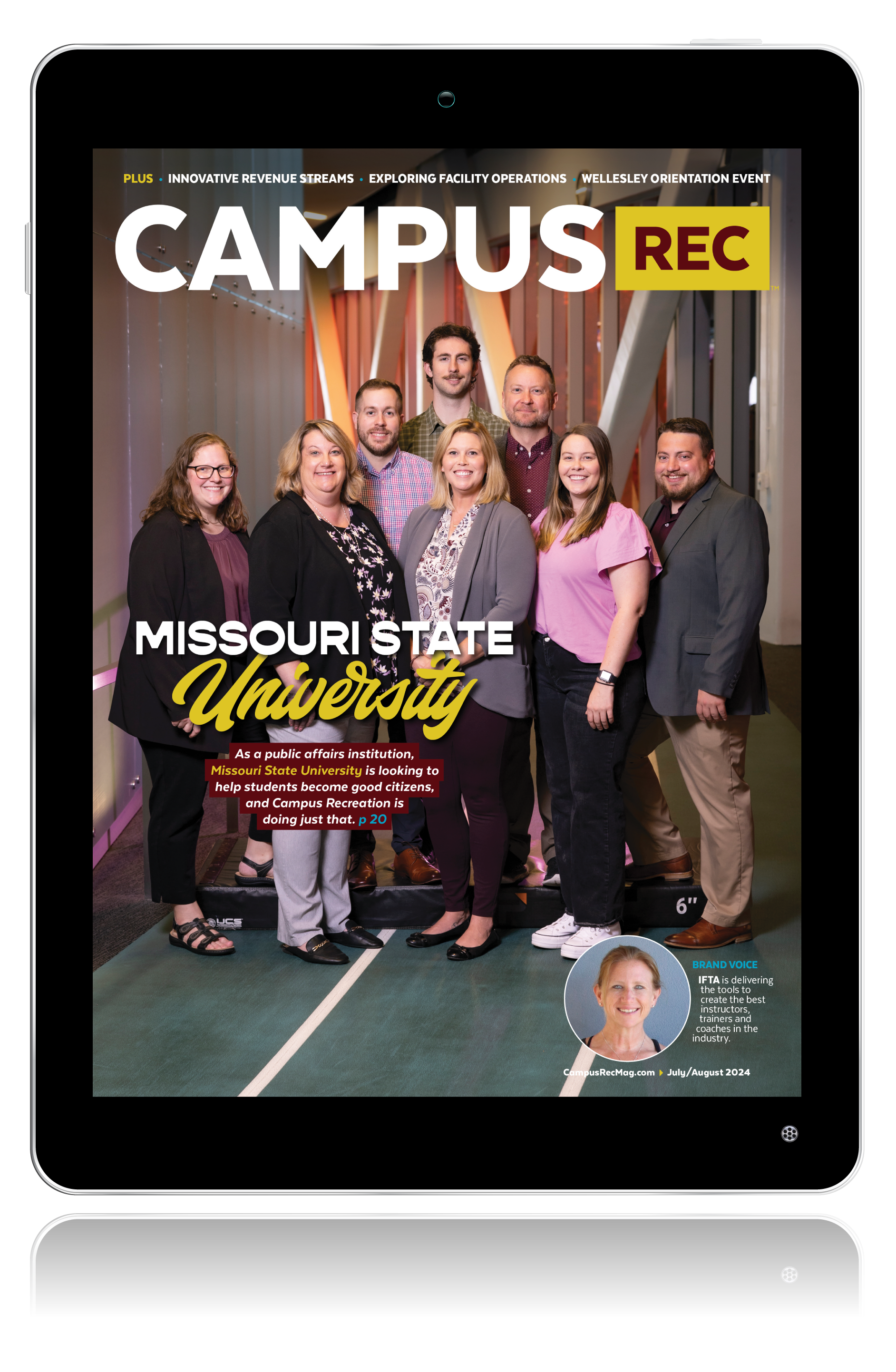Here is Part Two of a two part blog series by Matt Beck on lessons learned in renovation.
Many campus recreation professionals will encounter older facilities in need of significant change. Change could be in the form of renovation, such as replacing aging out-of-date equipment, flooring or repurposing spaces within a facility. There is not a definitive roadmap or “how-to” guide for renovation, especially as no one facility is alike. The first step toward getting where you want to be is to have the courage to decide you do not want to stay where you are. The Oklahoma State University (OSU) Department of Wellness found itself in that place in the spring of 2017. The facility was built in the 60s, renovated in the early 2000s and essentially unchanged from that time. Our leaders decided change was essential. It was needed, but change had to be intentional.
Take Action
“Without execution, ‘vision’ is just another word for hallucination.” –Mark Hurd
Strategic masterplans only work when they are implemented. According to Fortune Magazine, nine out of 10 organizations with a strategic masterplan fail to implement them. Reasons include: the plan does not fit the available funding, administration does not talk enough about the plan to keep people engaged and employees in the organization do not understand the plan.
As stated in the reasons above, funding is essential to move any project forward. A ‘pie in the sky’ masterplan is just a set of pretty pictures and charts if the budget is not a realistic target. How do you move forward and not be a statistic?
First, identify your available funding sources. Are reserve funds or capital improvement funds available in which to pay for projects outright? Will you need to propose an additional student fee, is there a foundation or endowment fund available, or is a bond an option in which to do a large scale project? Will you need to piece things together in phases due to lack of available funding? OSU was fortunate enough due to being good stewards of funds throughout the years to have sufficient reserve funds available in which to cover the total costs of the renovations and equipment in two different facilities. However, it had to be phased over the course two fiscal years.
If you have included the right stakeholders in the planning process, buy-in should already be achieved. However, if you need to pass a student fee in order to fund the project, be prepared to sell the vision once again to the student government association on your campus and possibly your institution’s board of regents by using assessment data to tell the story.
Identify Obstacles and Prioritize
Gary Keller, the founder of Keller Williams, said “Purpose without priority is powerless.” Ask yourself what matters the most when implementing the plan. Based on the information gathered in the process, you can identify what projects within the plan are the highest priority which drive when things happen along the timeline. Available funding and cost of the project are obviously two high level indicators for prioritizing projects. However, immediate needs identified by your stakeholders, needs assessment surveys, and your usage data are also very important.
For OSU, the highest priority items were replacing cardio, replacing strength equipment, replacing flooring, the indoor pool and increasing energy efficiency, especially in a 50-year-old building. Most of these project needs dated back to the last major renovation of our facility in 2004. However, some dated back much further to the opening of the facility in 1969. We also wanted to intentionally repurpose spaces that were seeing low usage as seen by our daily counts.
The old adage of “don’t bite off more than you can chew” is painfully true when it comes to renovation. Only dive into the projects your team and facility usage can handle rather than diving in to several unrelated projects all at once. Identify what barriers, if any, exist by using your needs assessment data, literal and figurative, that may be in the way of getting these projects done.
For Oklahoma State’s renovation, there was a large, 3,000 square-foot handicap ramp right in the middle of our facility, which is prime real-estate in a rec center. We had to involve our campus ADA people in order to prove our accessibility without the ramp, which fortunately we were able to do. The removal allowed for an additional 20 to 30 pieces of Hammer Strength selectorized and plate loaded machines to be installed, which freed up space in our main weight room. We knew we needed to address the things we could immediately effect with funds on hand and then go through the process of generating the necessary funding for a large project, such as an indoor pool renovation or new build.
The decisions you make at this stage should be largely based on your collected data and the priorities outlined in your masterplan. You may only get this one opportunity to execute your plan for change. Be precise. Measure twice; cut once.










